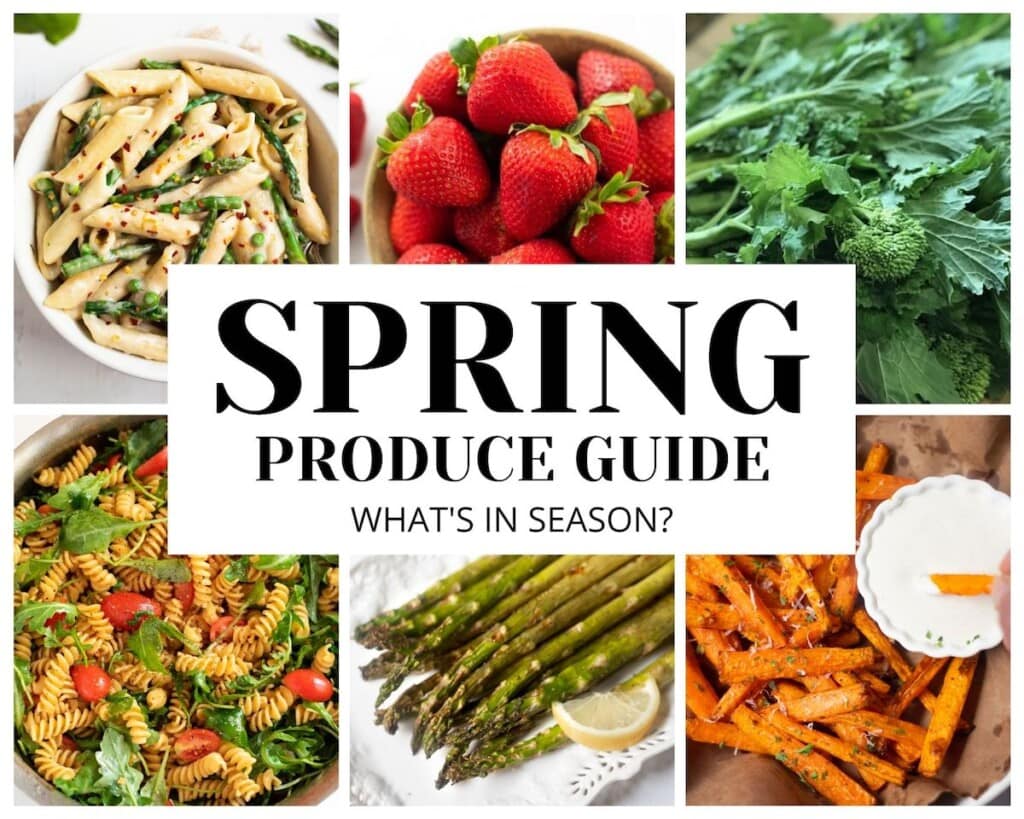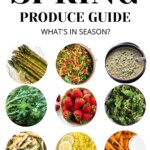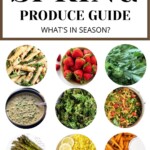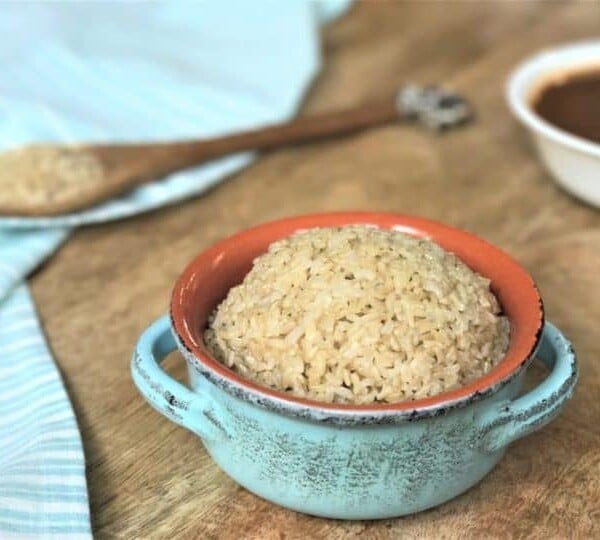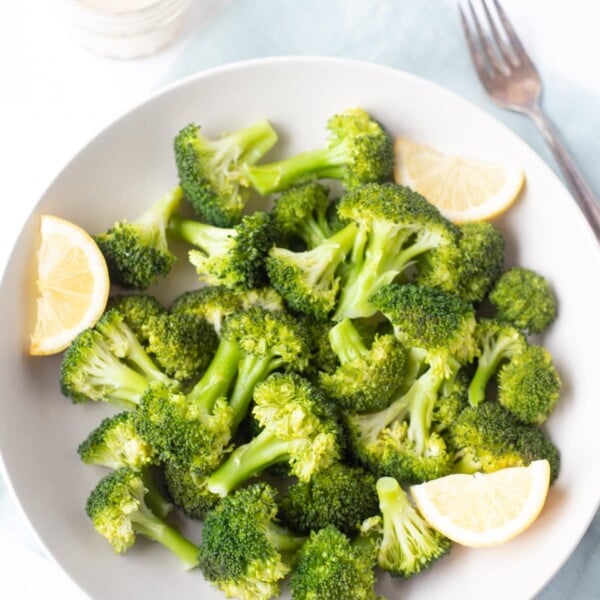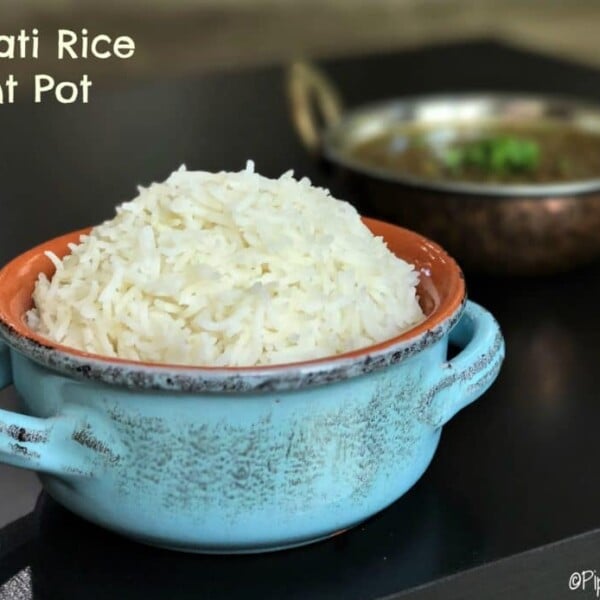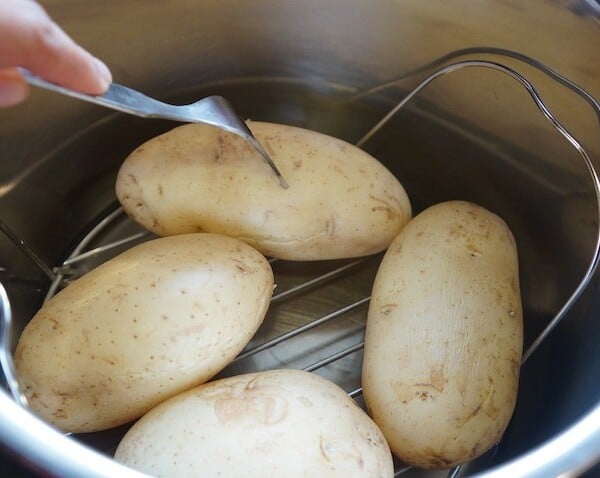Happy Spring! Eating fresh seasonal fruits and vegetables is always more flavorful and nutritious and also helps save money. Here is the spring produce guide that will help you choose and cook with veggies that are in the season!
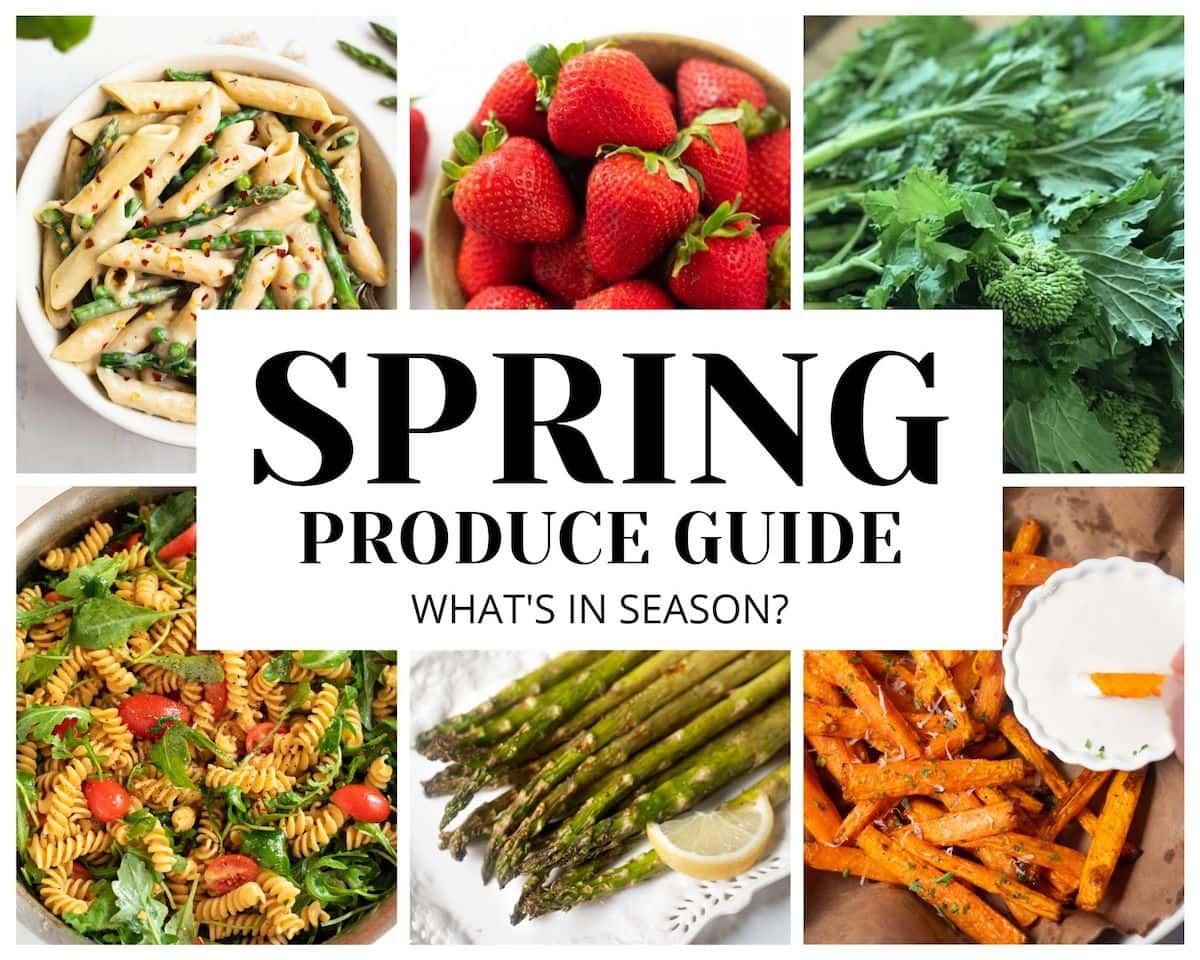
Spring is here! After the long, cold winter, spring is always exciting, with the beautiful weather and all the wonderful fresh fruits and veggies in the market to brighten us up.
I love eating seasonal fruits and vegetables. There are so many benefits to eating in season—they are healthier, cheaper, and tastier.
This spring seasonal produce guide will help you learn about the veggies and fruits that are in season and give you some recipe ideas to incorporate them. So you can eat fresh and save money!
So, let’s dig into our SPRING Seasonal Produce Guide.
Table of contents
Spring Seasonal Vegetables
Artichoke
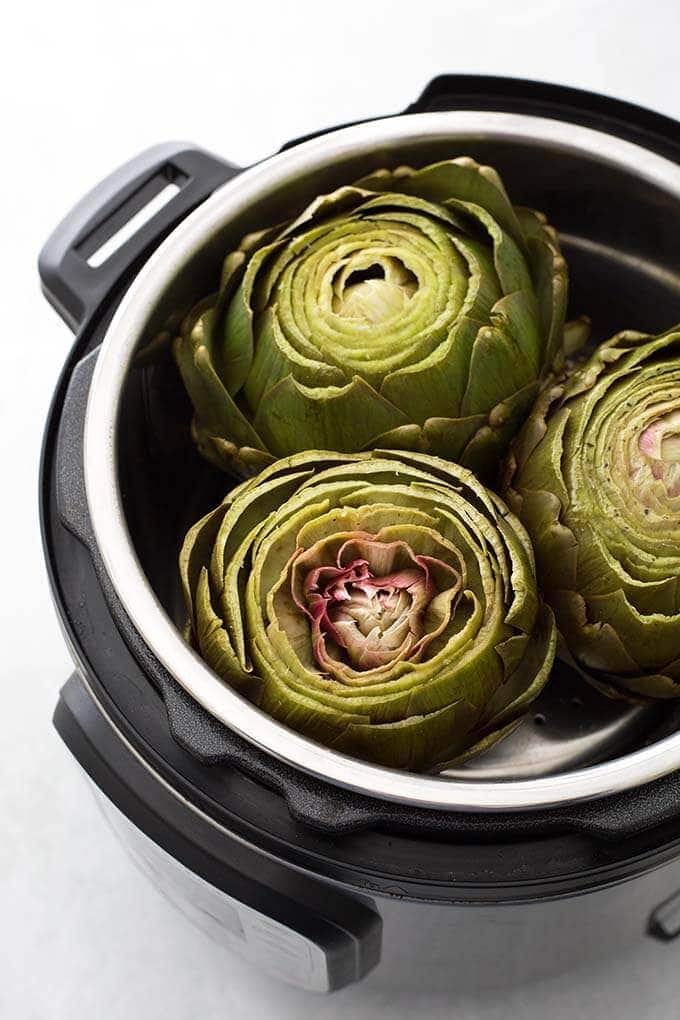
Artichokes are usually available all year but better during the peak season. Spring is the perfect time to enjoy fresh artichokes. They are high in nutrients and very low in calories. They are good for liver health and can soothe digestion.
Look for artichokes with tight, compact leaves and thick stems for large hearts. They require some prep but have a wonderful earthy flavor and meaty texture.
Recipes:
- Spinach Artichoke Lasagna
- Instant Pot Artichokes – by Simply Happy Foodie
- Mediterranean Roasted Artichokes – by The Mediterranean Dish
Asparagus
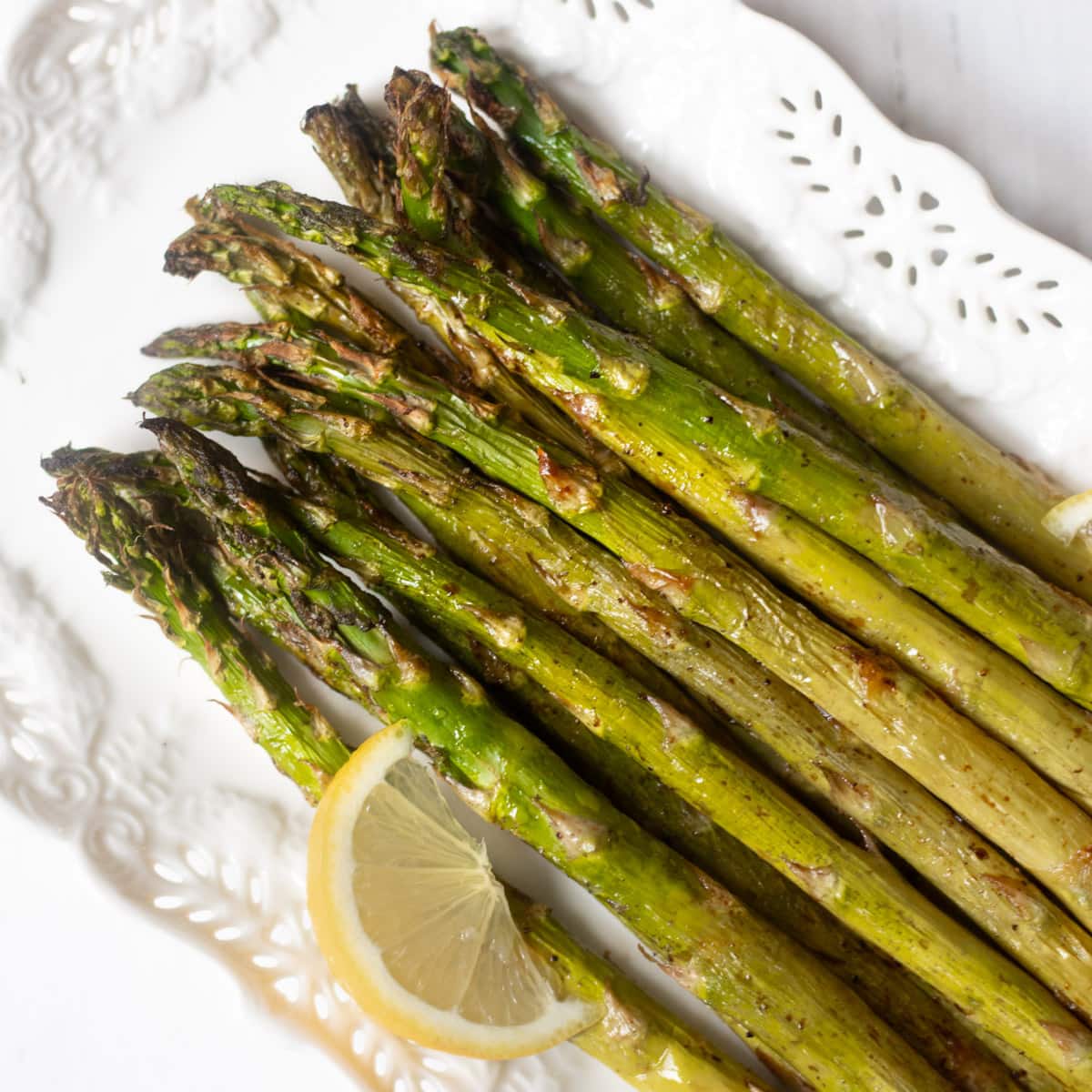
Asparagus is one of the first vegetables to pop up in the spring. It is rich in vitamins and minerals, including vitamin K, folate, copper, and thiamin. We love asparagus as it is delicious, quick, and easy to cook.
When buying, look for firm, moist, plump stalks with closed heads. Dry, woody or cracked stalks mean they have been sitting on the shelf for a while and must be avoided.
The most common variety is green asparagus, but there is also white and purple asparagus!
Recipes:
- Roasted Asparagus
- Asparagus Soup
- Lemon Asparagus Pasta
- Lemon Asparagus Risotto
- Indian Asparagus Stir Fry
- Lemon Garlic and Herb Asparagus
Broccoli Rabe/Rapini
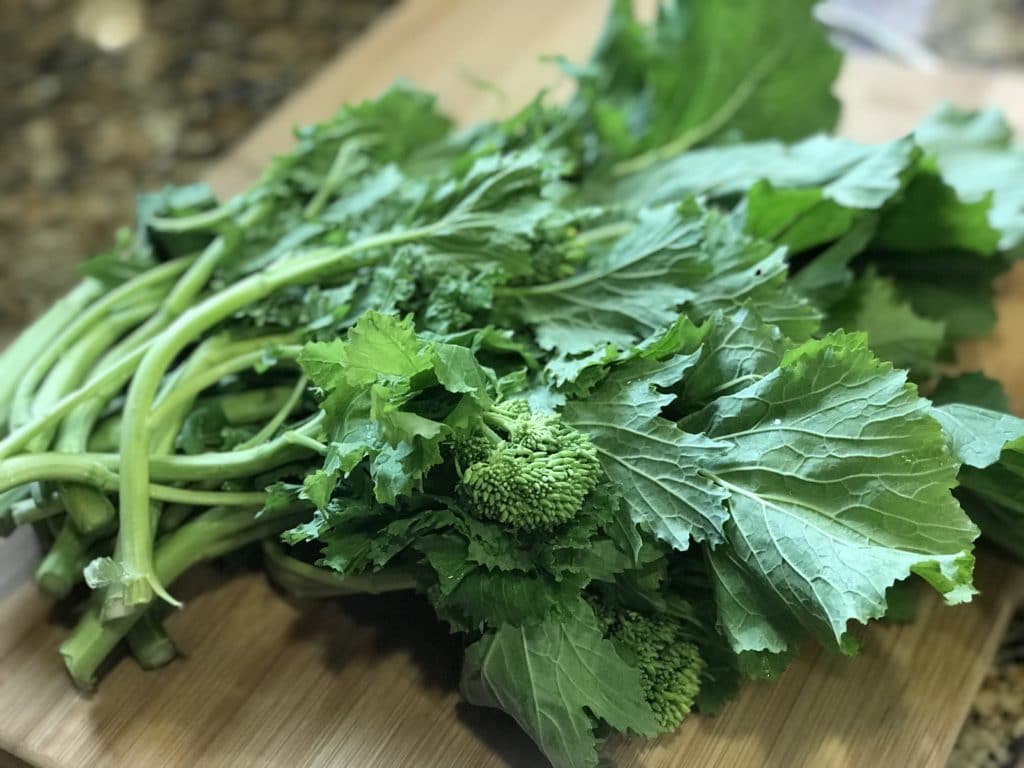
Broccoli Rabe is known by many names – raab, rapa, rapine, rappi, turnip broccoli, and Italian or Chinese broccoli. The leaves, buds, and stems of broccoli rabe are all edible. Rapini has a slightly bitter taste, which we enjoy in Saag!
It hits peak season in early spring, just in time for colorful spring dishes. Broccoli rabe is nutrient rich with loads of vitamins C and A, and potassium and is low in calories.
Recipes:
- Sarson ka Saag
- Saag Aloo
- Sautéed Broccoli Rabe with Garlic – by Martha Stewart
Carrots
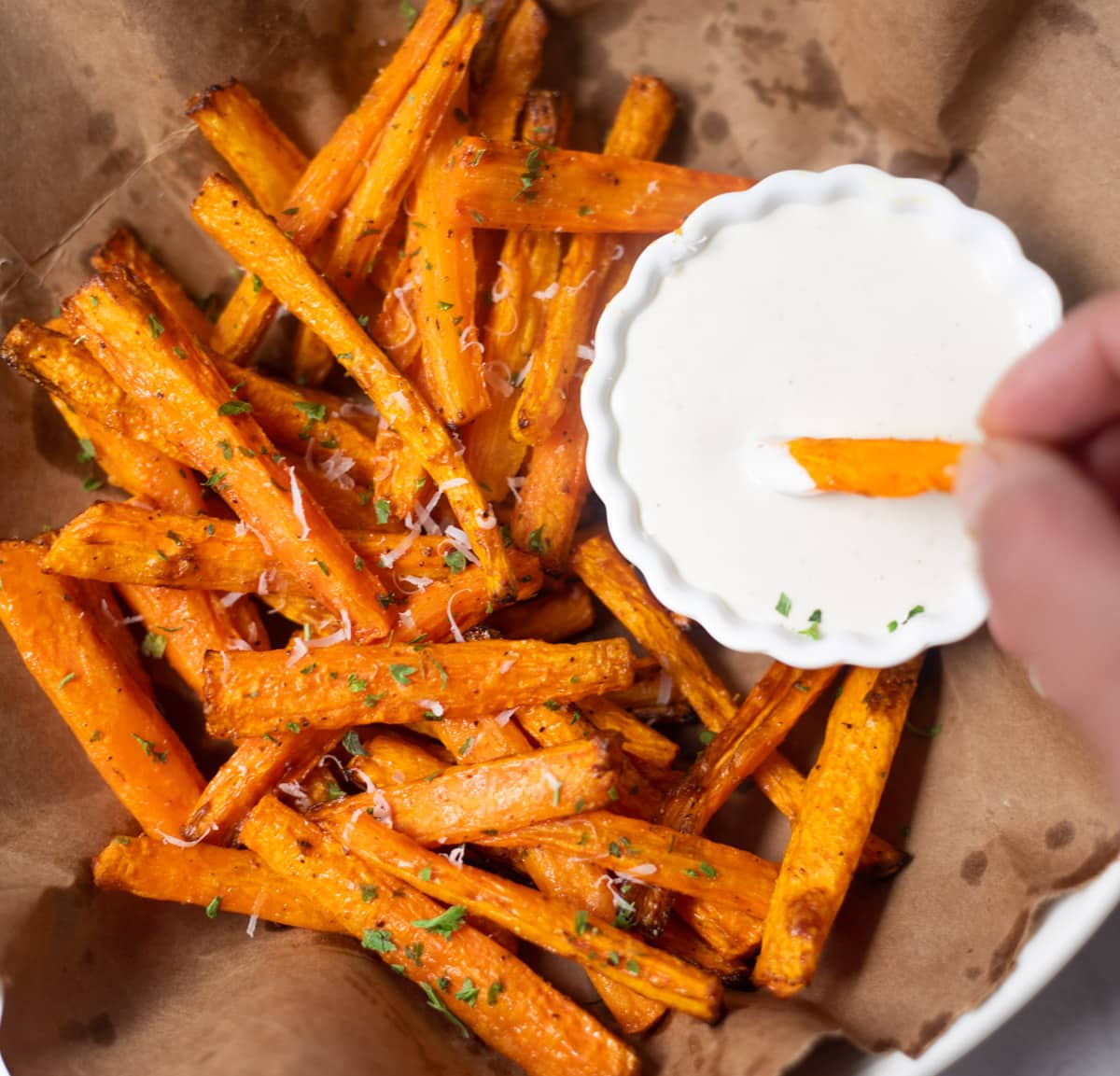
Carrots are crunchy, tasty, and very nutritious. They are a powerhouse of the nutrient beta-carotene, which is helpful for healthy vision. You will find them in various colors, from the typical orange to purple and white. Eating carrots will also give you fiber, vitamin C, vitamin K, and potassium.
Carrots have a much longer growing season than some other delicate produce items. However, you will find thin, delicate baby carrots in spring. These are sweet, vibrant, and very nutritious.
Recipes:
- Roasted Carrot Fries
- Garlic & Herb Carrots
- Amazing Steamed Carrots
- Carrot Soup with Ginger & Coconut Milk
- Vegan Roasted Red Pepper & Carrot Soup
- Healthy Carrot Muffins
- Carrot, Potato, & Peas Stir Fry
- Carrot Halwa (Indian Carrot Pudding)
Fava Beans
Fava beans are found fresh for a very short time in the spring. They are also called Faba Beans or Broad Beans. When buying, choose young beans with fuzzy, bright-green pods that look and feel fresh.
When buying fresh beans, you have to split open their pods and pinch each bean out of its skin. What you get are tender, bright green beans.
The Mediterranean treasure has a sophisticated bittersweet flavor and adds an emerald accent to sautés. In India, broad beans are cooked to make curries and stir fry. Check out this comprehensive guide to cooking Fava beans.
Recipes:
- Fave Bean Fennel Salad – by Simply Recipes
- Egyptian Fava Beans – by The Mediterranean Dish
- Warm Fava Bean Kamut Salad – by Cooking Canuck
Leeks
Leeks can be found year-round, but they’re a classic spring vegetable, available in markets from late winter through early summer. When buying, look for leeks with firm, straight, dark green leaves and white necks. Skip any yellow, bruised, discolored, soft, mushy, cracked or split open.
Leeks are a member of the onion family, which is related to shallots, garlic, scallions, and chives. They have a mellow, sweet flavor that complements dishes with other flavorful spring veggies and are a great addition to soups.
Recipes:
- Apple Potato Leek Soup – by Grain Free Table
- Creamy Mushroom and Leek Chicken Breasts – by Foodie Crush
- Leek & Mushroom Rice – by Iowa Girl Eats
Peas
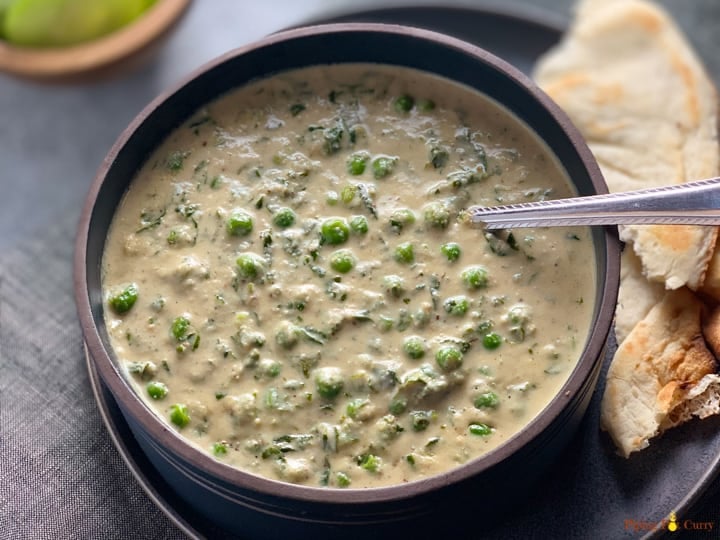
If you are tired of eating frozen peas, spring is the best time to purchase fresh peas. The edible pod is crisp and filled with tender, sweet peas. They are bursting with nutrients and provide a variety of vitamins.
Green peas are very commonly used in Indian cuisine. They are purchased fresh, and the pods are opened to remove the little peas. These are then used immediately or refrigerated/frozen for later use.
Recipes:
Radishes
Red radishes are another root vegetable you’ll see all year, and they’re consistently tasty, but spring is prime time for many varieties.
You can find radishes in many colors – pink, red, or purple- with a crisp, refreshing peppery flavor. They are packed with vitamins and fiber and are often added raw to salads. They can also be steamed or roasted.
Recipes:
- Sautéed Radishes and Radish Greens – by Healthier Steps
- Roasted Radishes – by Salt and Lavender
- Mooli Paratha
Rhubarb
This perennial vegetable of Asian descent has edible stalks, but the leaves are toxic and shouldn’t be eaten. The edible stalk of the plant is pink-to-ruby-hued and tastes extremely bitter and astringent when raw. Hence, you will find that most dishes that use rhubarb are sugary desserts, which helps balance rhubarb’s tart flavor.
When buying, choose firm, crisp red stalks. If there are leaves, choose ones with small leaves, but discard the toxic leaves.
Recipes:
- Strawberry Rhubarb Oatmeal – by Running on Real Food
- Strawberry Rhubarb Pie – Sallys Baking Addiction
Snap Peas
Snap peas, also known as sugar snap peas, are an edible pod-pea different from snow peas. They are most frequently enjoyed in salads and stir fry.
Choose snap peas with plump, crisp pods. Look for that snapping sound when breaking them in half. You want peas that are medium to dark green in color. Before eating, remove the string from mature snap pea pods.
Recipes:
- Vegetable Lo Mein
- Greek Sugar Snap Peas – by Cookin Canuck
Spring Greens (Arugula, Spinach, Lettuce, Chard)
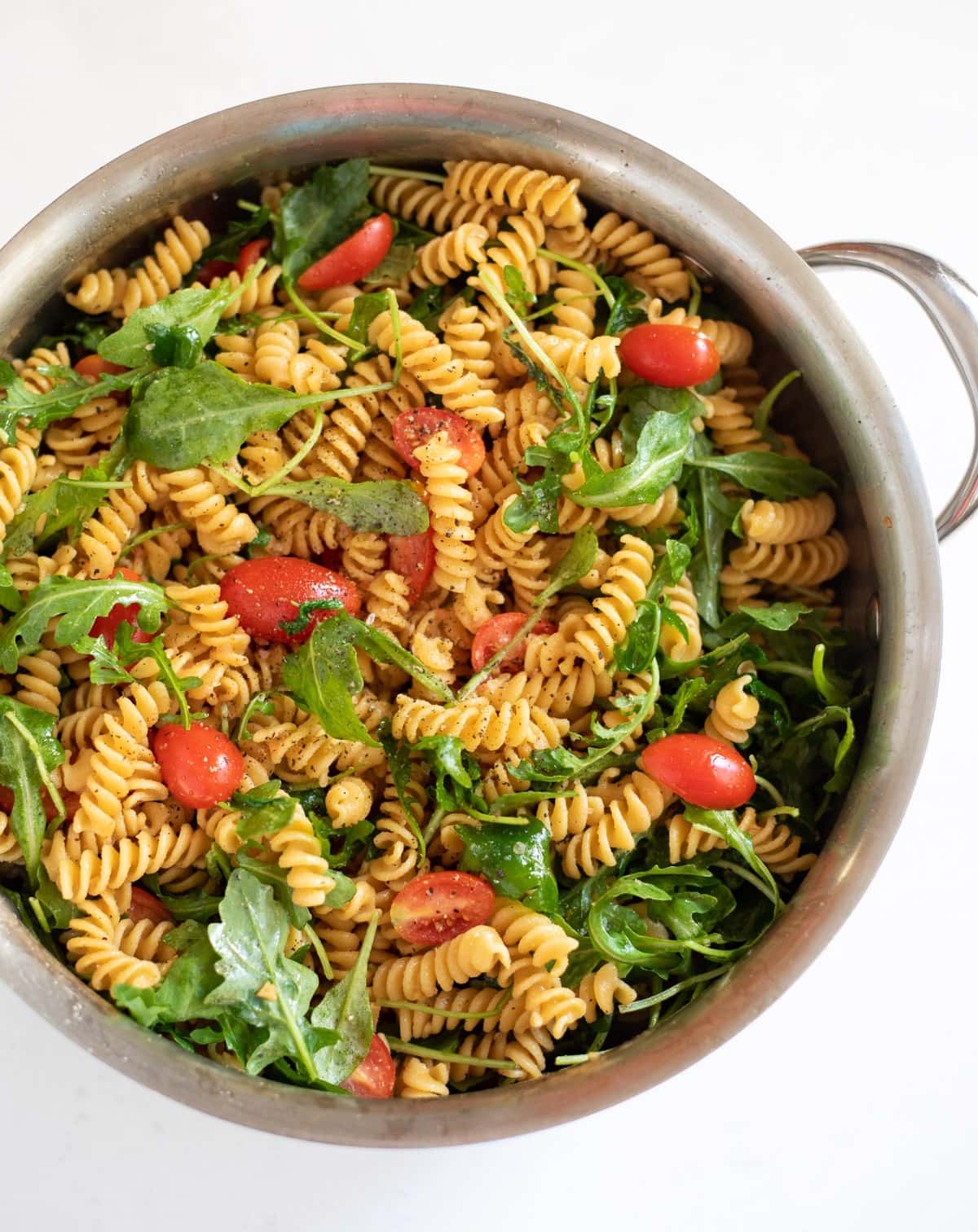
The best time to eat fresh greens is between March and June. Arugula, spinach, lettuce, chard, and collard greens are at their brightest during spring. The greens available in the farmer’s market or grocery stores might vary depending on where you live.
Always choose leaves that are green, crisp, and vibrant. Skip the ones that are wilted, brown, or yellowed. When buying bags or boxes of greens at the grocery store, look for ones with less moisture.
Recipes:
Spring Seasonal Fruits
Lemons
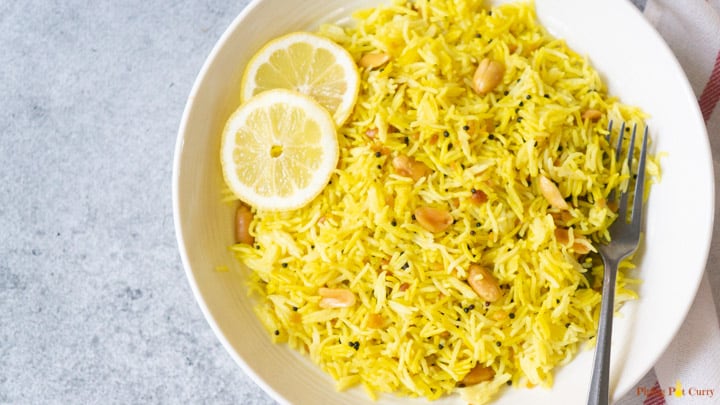
The perfect season for lemons begins right at the start of the citrus season in November. It lasts through the season into May. Lemons are used primarily for their juice, but the pulp and rind are also used in cooking and baking. Look for firm lemons that are heavy for their size and have thin skin.
Recipes:
Mango
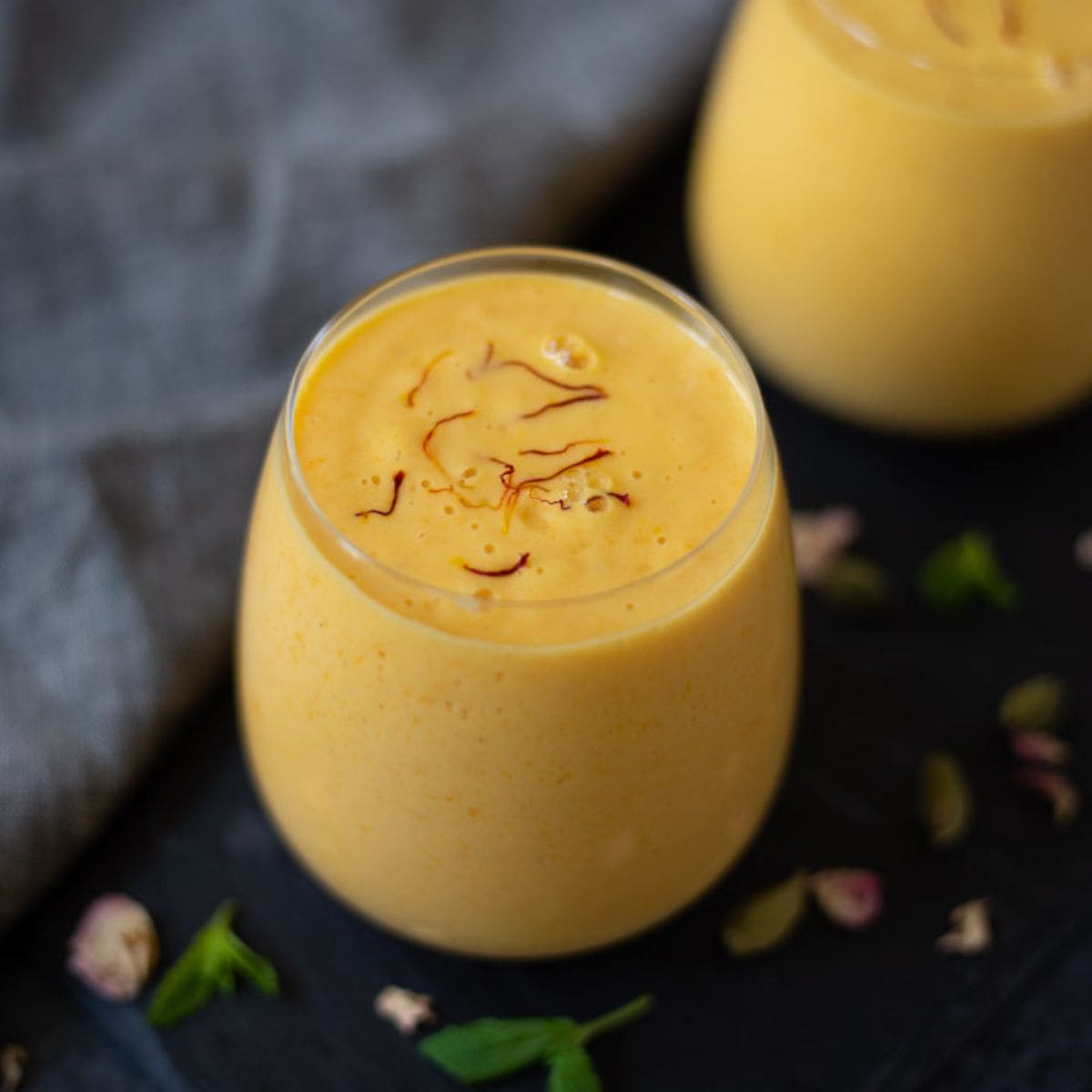
Mango is my absolute favorite fruit. It is no wonder the national fruit of India. This delicious fruit also has a great nutritional profile – rich in Vitamin C, a good source of fiber and potassium.
Mangoes come in many varieties and can vary in taste. They are most commonly sweet, with soft, pulpy flesh. The peak season for mangoes is from May to September.
Recipes:
Pineapple
This tropical fruit is best and fresh in the Spring season. Pineapple is loaded with nutrients, antioxidants, and compounds that are very beneficial. Choose a pineapple with a sweet aroma. It changes color from green to yellow as it ripens.
Pineapple is incredibly versatile and can be consumed in a variety of ways. The flesh and juice of the pineapple are used in cuisines worldwide. Eat them raw, use them in desserts, or enjoy the juice. We also love to add pineapple chunks to Thai curries.
Recipes:
- Pineapple Mango Salsa
- Pineapple Fried Rice – by Everyday Maven
- Sweet & Sour Chicken with Pineapple – by Spoonful of Flavor
Strawberry
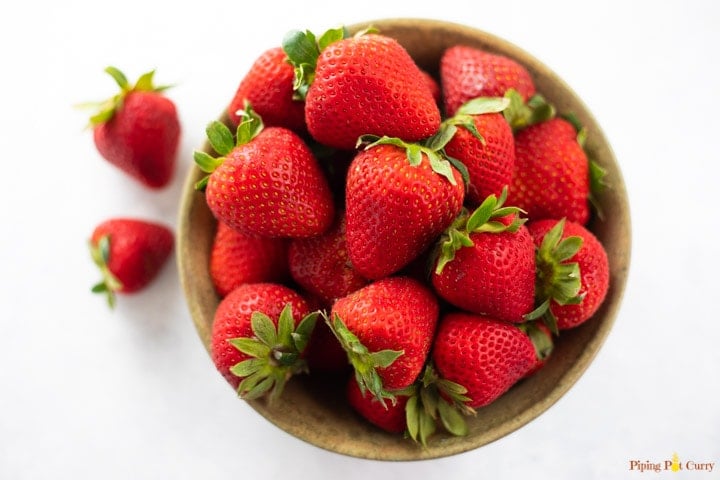
Who doesn’t love strawberries? Although they can be found all year round, they taste best when in season, from mid-to-late spring through summer.
Buy small to medium-sized strawberries for better flavor. Choose berries that are red and bright with no white shoulders or soft spots. If there are strawberry farms, try strawberry picking as a fun family activity.
Recipe:
- Instant Pot Strawberry Jam (no pectin)
- Strawberry Lassi
- No-bake Strawberry Cheesecake Jars – by Mama Cheaps
- Strawberry Basil Pecan Salad with Goat Cheese – by Fox & Briar
- Strawberry Pie – by Grain Free Table
I hope this produce guide helps you eat more seasonally. I would love to hear about your favorite spring foods. If your favorite vegetable or fruit did not make this list, do share in the comments!
If you find this spring produce guide useful, I’d love to hear from you! And if you can, share it with your friends and family.
